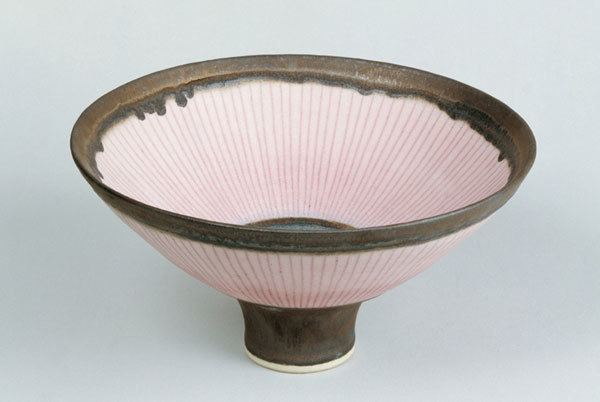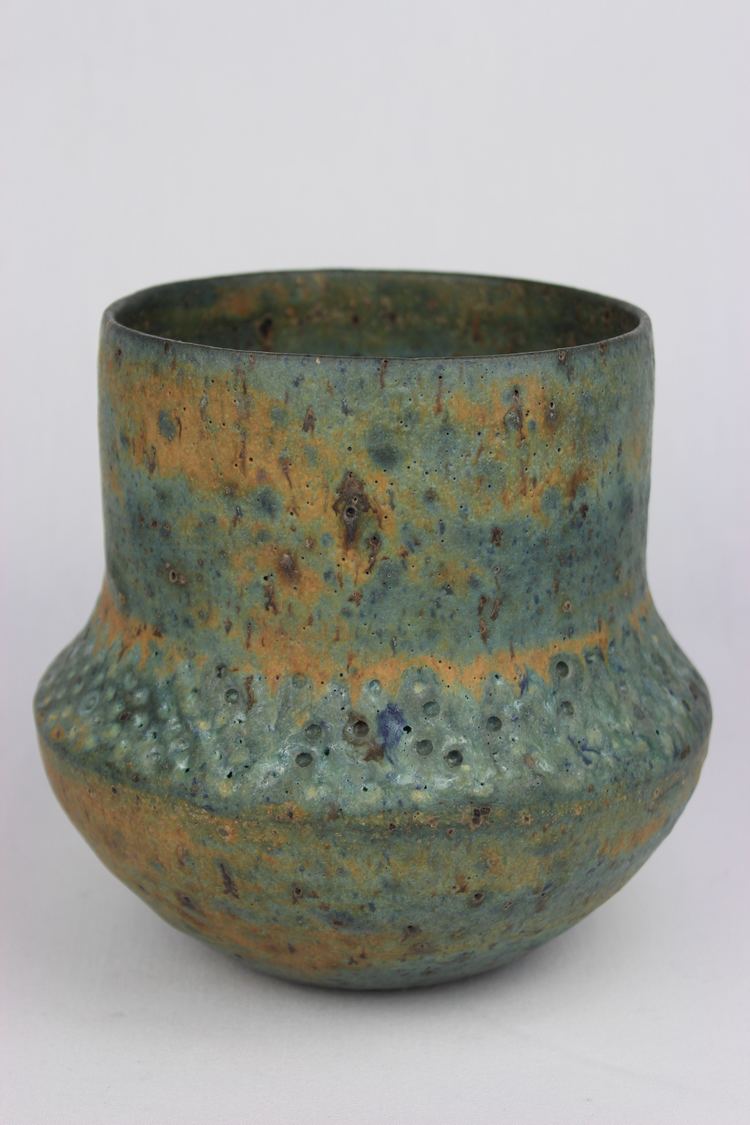Full Name Lucie Gomperz Name Lucie Rie | Nationality British Books Lucie Rie and Hans Coper | |
 | ||
Died April 1, 1995, London, United Kingdom | ||
Lucie rie pottery
Dame Lucie Rie, , (16 March 1902–1 April 1995) ( [lʊtsiː ʀiː]) was an Austrian-born British studio potter.
Contents
- Lucie rie pottery
- Important Design Lucie Rie and Hans Coper Potter and Artist
- Early years and education
- Vienna
- London
- Death
- Legacy
- Awards and honours
- References

Important Design | Lucie Rie and Hans Coper – Potter and Artist
Early years and education

Lucie Gomperz was born in Vienna, Lower Austria, Austria-Hungary the youngest child of Benjamin Gomperz, a Jewish medical doctor who was a consultant to Sigmund Freud. She had two brothers, Paul Gomperz and Teddy Gomperz. Paul Gomperz was killed at the Italian front in 1917.

She studied pottery under Michael Powolny at the Vienna Kunstgewerbeschule, a school of arts and crafts associated with the Wiener Werkstätte, in which she enrolled in 1922.
Vienna

While in Vienna, Lucie's uncle from her mother's side had a collection of art that inspired her interest in archeology and architecture. She was first inspired by her uncle's Roman pottery collection which had been excavated from the suburbs of Vienna. She set up her first studio in Vienna in 1925 and exhibited the same year at the Paris International Exhibition.
In 1937, she won a silver medal at the Paris International Exhibition (the exhibition for which Pablo Picasso painted Guernica).
London
In 1938, she fled Nazi Austria and emigrated to England, where she settled in London. Around this time she separated from Hans Rie, a businessman whom she had married in Vienna in 1926, and their marriage was dissolved in 1940. For a time she provided accommodation to another Austrian émigré, the physicist Erwin Schrödinger. During and after the war, to make ends meet, she made ceramic buttons and jewellery, some of which are displayed at London's Victoria and Albert Museum and as part of the Lisa Sainsbury Collection at the Sainsbury Centre for Visual Arts, University of East Anglia, Norwich.
In 1946, she hired Hans Coper, a young man with no experience in ceramics, to help her fire the buttons. Although Coper was interested in learning sculpture, she sent him to a potter named Heber Mathews, who taught him how to make pots on the wheel. Rie and Coper exhibited together in 1948. Coper became a partner in Rie's studio, where he remained until 1958. Their friendship lasted until Coper's death in 1981.
Rie's small studio was at 18 Albion Mews, a narrow street of converted stables near Hyde Park. She invited many people to her studio and was renowned for giving her visitors tea and cake. The studio remained almost unchanged during the 50 years she occupied it and has been reconstructed in the Victoria and Albert Museum's ceramics gallery.
Rie was a friend of Bernard Leach, one of the leading figures in British studio pottery in the mid-20th century, and she was impressed by his views, especially concerning the "completeness" of a pot. But despite his transient influence, her brightly coloured, delicate, modernist pottery stands apart from Leach's subdued, rustic, oriental work. She taught at Camberwell College of Arts from 1960 until 1972.
She received several awards for her work and exhibited with great success. Her most famous creations are vases, and tea bowls, which drew inspiration mainly from Japan. There are other works such as buttons, which she bequeathed to her close friend the Japanese designer Issey Miyake.
Death
She stopped making pottery in 1990, when she suffered the first of a series of strokes. She died at home in London on 1 April 1995, aged 93.
Legacy
Rie's work has been described as cosmopolitan. She is best remembered for her bowl and bottle forms. Her pottery is displayed in collections around the world, including the Museum of Modern Art in New York, the York Art Gallery in the UK, the Carnegie Museum of Art in Pittsburgh, and Paisley Museum in Scotland. Her studio was moved and reconstructed in the new ceramics gallery at the Victoria and Albert Museum opened in 2009.
